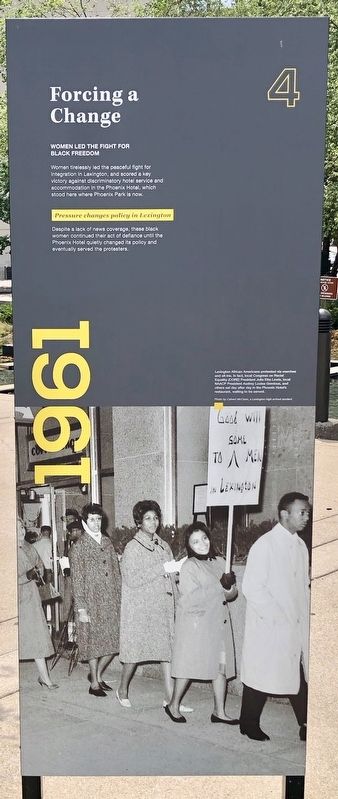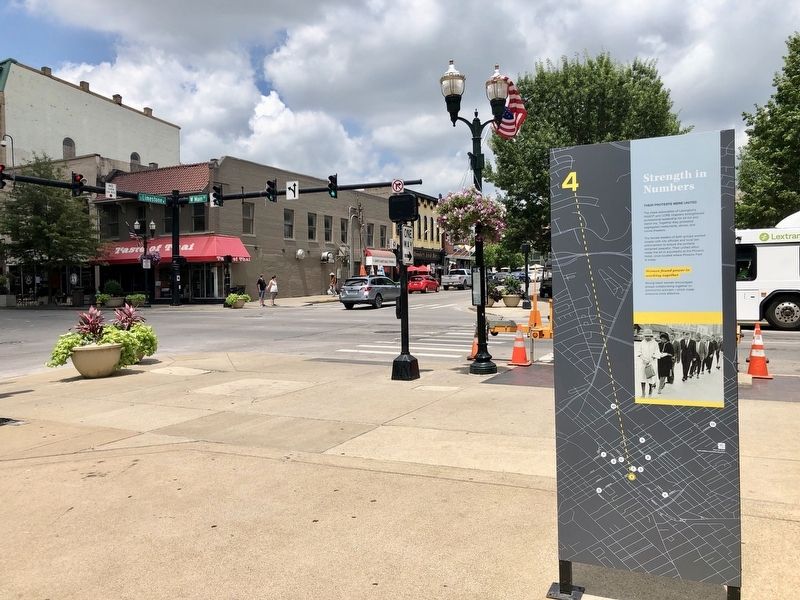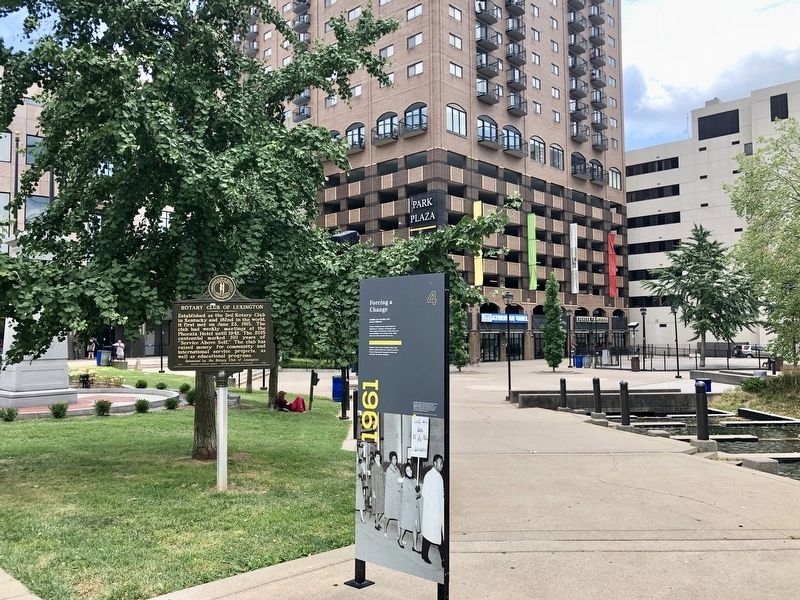Strength in Numbers / Forcing a Change
1961
— Downtown African-American Heritage Trail —
Their Protests Were United
The close association of Lexington's NAACP and CORE chapters strengthened professional leadership for sit-ins and stand-ins. Together they protested segregated restaurants, stores, and movie theaters.
The female leaders of both groups worked closely with city officials and local law enforcement to ensure the protests remained peaceful. Their unified effort made the sit-in successful at the Phoenix Hotel, once located where Phoenix Park is today.
Women found power in working together
Strong black women encouraged groups collaborating together on community activism-which made everyone more effective.
Women Led the Fight for Black Freedom
Women tirelessly led the peaceful fight for integration in Lexington, and scored a key victory against discriminatory hotel service and accommodation in the Phoenix Hotel, which stood here where Phoenix Park is now.
Pressure changes policy in Lexington
Despite a lack of news coverage, these black women continued their act of defiance until the Phoenix Hotel quietly changed its policy and eventually served the protesters.
Photo caption: Lexington
African Americans protested via marches and sit-ins. In fact, local Congress on Racial Equality (CORE) President Julia Etta Lewis, local NAACP President Audrey Louise Grevious, and others sat day after day in the Phoenix Hotel's restaurant, waiting to be served.
Erected 2018 by Together Lexington. (Marker Number 4.)
Topics. This historical marker is listed in these topic lists: African Americans • Civil Rights • Women.
Location. 38° 2.769′ N, 84° 29.822′ W. Marker is in Lexington, Kentucky, in Fayette County. Marker is at the intersection of East Main Street (U.S. 25) and South Limestone Street, on the left when traveling west on East Main Street. Touch for map. Marker is at or near this postal address: 100 East Main Street, Lexington KY 40507, United States of America. Touch for directions.
Other nearby markers. At least 8 other markers are within walking distance of this marker. Rotary Club of Lexington / Phoenix Hotel (here, next to this marker); Phoenix Park (a few steps from this marker); Lewis and Clark in Kentucky (within shouting distance of this marker); Skuller's Clock (within shouting distance of this marker); Lexington's Long History with Slavery / Driven by Money (about 300 feet away, measured in a direct line); Main Street Christian Church
Regarding Strength in Numbers / Forcing a Change.
Black Freedom Struggle (1950s-Present)
The Black Freedom Struggle was most visible during the 1950’s and 60’s where groups such as C.O.R.E, the N.A.A.C.P, and the Urban League fought against discriminatory policies. Lexington’s desegregation achievements were reached through peaceful demonstrations. The growth towards equality continues today. Local accomplishments such as the removal of confederate statues through the movement “Take Back Cheapside”, and national organizing like “Black Lives Matter” show that activism for racial equality are still necessary.
Credits. This page was last revised on October 29, 2020. It was originally submitted on July 30, 2019, by Mark Hilton of Montgomery, Alabama. This page has been viewed 173 times since then and 18 times this year. Photos: 1, 2, 3, 4. submitted on July 30, 2019, by Mark Hilton of Montgomery, Alabama.



